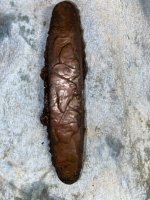bedrock bubba
Sr. Member
- Jun 27, 2010
- 446
- 396
I don't want a fire assay.
I want to get grab samples from a large black sand pile. And want a quantitative analysis of gold content of blacks sand, that is inexpensive. If it were up to me, I would roast or grind the BS and put it under a microscope and do a count of visibles. But were talking about huge piles of the stuff, I may want to bid on with the owner if it is rich.
And I don't want to tip them off, and give them the idea to steal from me. So I will present it as a need for organic soil amendment. And what would be a good price per ton as a "soil amendment".
The big assay companies want a fortune to leach test it with expensive leach chemicals.
Any ideas from the inteligencia?
I want to get grab samples from a large black sand pile. And want a quantitative analysis of gold content of blacks sand, that is inexpensive. If it were up to me, I would roast or grind the BS and put it under a microscope and do a count of visibles. But were talking about huge piles of the stuff, I may want to bid on with the owner if it is rich.
And I don't want to tip them off, and give them the idea to steal from me. So I will present it as a need for organic soil amendment. And what would be a good price per ton as a "soil amendment".
The big assay companies want a fortune to leach test it with expensive leach chemicals.
Any ideas from the inteligencia?
Upvote
0










